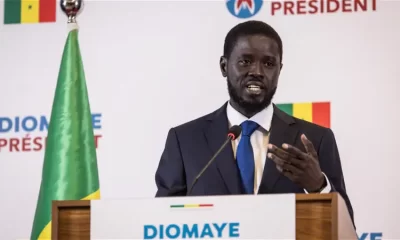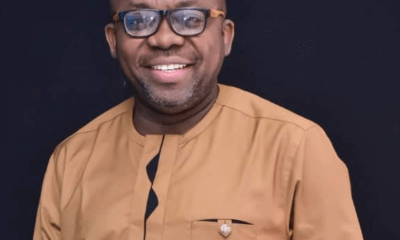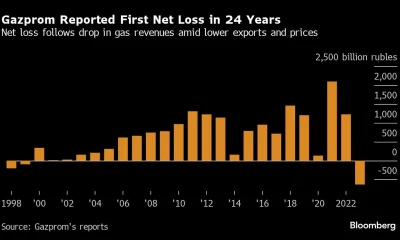National Issues
Ways And Means: As Nigeria’s Senate Investigates -By Yomi John
An average of N250 billion to N300 billion was consistently required to meet salary payments alone, without accounting for capital expenditures and other service-wide commitments. This recurring deficit was not factored into the budget in anticipation of revenue performance as anticipated, leaving no borrowing window except for Ways and Means.

Loans popularly called Ways and Means taken from the Central Bank of Nigeria and utilized by the Nigerian government have been in the news of recent. This makes one to want to take a closer look at it as it has been of national and international interest. While I’m not fronting for the government – past or present – what is available in public space but which many Nigerians may not have closely perused is what I call attention to here. It is the outcome of specific attention I decide to pay to the matter. My interest has further been spurred by the senate arm of the National Assembly which decides lately to investigate the use of Ways and Means.
Ways and Means globally refers to a temporary overdraft extended by the Central Banks to their respective national government for funding of deficits not anticipated by the budget. The Federal Government of Nigeria (FGN) has consistently employed this facility to navigate fiscal challenges plaguing the nation over time. The frequency of access to Ways and Means increased notably between 2016 to 2023. This increase was driven by factors such as; the NNPC’s inability to meet production quotas as budgeted; crash of crude oil price in the international market; failures of revenue-generating Agencies to meet targets as captured in the budget; oil subsidy/ under-recovery; the impact of Covid-19 and the subsequent global economic meltdown; the impact of the war in Ukraine; and domestic security issues r that required significant funding, but also security issues related to illegal bunkering, theft, and pipeline vandalism. A combination of these factors has reduced the revenue available to the government but also increased cost thereby increasing the funding deficit beyond the deficit anticipated in the budget over the years.
According to the fiscal report of the government, FGN Revenue Performance from 2015 – 2023 (N’billion) shows the following: In 2015, a deficit of -242.786; 2016, -1,234.593; 2017, -1,719.543; 2018, -3,212.582; 2019, -2,458.045; 2020, -1,583.872; 2021, -1,989.127; 2022, -3,708.542. Despite receiving revenue from the Federation Account Allocation Committee (FAAC) and other independent sources, the entire FGN revenue proved insufficient to cover monthly salary and pension payments, statutory transfers and overheads. With a monthly wage bill and statutory payments of approximately N500 billion, the total revenue monthly averages around N230 billion after deducting the provision for foreign debt service.
Analysis of 2023 Fiscal Performance for the period January-September, 2023 shows what the government budgeted (in N’billion) 4,723.49 for FAAC but it actually had available 2,702.09. For IGR, the government estimate was 6,321.62 but it actually had 1,583.93. In sum the government estimated a total of 11,045.11, but actually had 4,286.02. As for its expenditure in the same year, Statutory Transfer was budgeted to gulp 967.49, but the actual amount available was 711.36; Personnel, 4,958.41 but 3,327.69 was actually available; Overhead, 443.276 but 240.392 was actually available; budgeted for other recurrent was 1343.963 but only 397.99 was actually available. In total 7,713.13 was budgeted but 5,660.09 was available.
An average of N250 billion to N300 billion was consistently required to meet salary payments alone, without accounting for capital expenditures and other service-wide commitments. This recurring deficit was not factored into the budget in anticipation of revenue performance as anticipated, leaving no borrowing window except for Ways and Means. Authorization was intermittently sought from the president to expand the Ways and Means, a step deemed necessary to ensure essential salary payments and avert crises.
As public information shows another key contributor to the expanded Ways and Means for the period under review (2015 to 2022) is the servicing of domestic debts. the FGN solely serviced its domestic borrowing through the Consolidated Revenue Fund (CRF), an account already in deficit. This alone has increased the Ways and Means by a total debit of N13,535.572 trillion during this period. These debits have no revenue accruing to reduce the debits thereby cumulatively increasing the CRF deficit on a monthly basis.
An analysis of domestic debt from 2015 to 2023 in (N’billions) shows that in 2015 reconciled domestic debt service amounted to 996.798; 2016, 1,205.824; 2017, 1,451.222; 2018, 1,797.901; 2019, 1,661.028; 2020, 1,854.693; 2021, 2054.442; 2022, 2,513.664, amounting to a total of 13,535.572. The Central Bank in adherence to the CBN Act, continued charging interest on the Ways and Means balance at MPR plus 3% ( a very steep rate). The bank did not want to classify the Ways and Means as doubtful loans despite prudential guide lines. Instead the securitization option was taken. The accumulated interest on ways and means stood at N4,218.121 trillion as at December 2022 with an interest projection of N198 billion for January 2024
Furthermore, an analysis of Interest on Ways and Means 2015 to 2022 (N’billion) shows that in 2015, reconciled domestic debt service was 17.849. In 2016 it was 3.30; 2017, 9.507; 2018, 63.165; 2019, 504.365; 2020, 912.567; 2021, 2,513.664; 2022, 1469.209, amounting to a total of 4,218.121. To address salary deficits, the FGN withdrew a total of N4.449 trillion from 2015 to 2021, primarily utilized for salary payments, statutory transfers and urgent recurrent expenditures. Following increased frequency and their External Auditors queries, the CBN stopped further withdrawals for salary payments from June 2021. Consequently, the FGN began borrowing from various other sources, including special accounts and intervention funds.
Furthermore, the sum of N483.970 billion was withdrawn in 2016 and 2017 to partially finance the Paris Club loan refund to states. Also in 2016 N10.891 billion payments for states deferred loan deductions and N22.00 billion both CPV Coupon Payments and Redemption were withdrawn. The other withdrawals cumulatively total N516.861b
In 2022 the approval given by the President covered N22.7 trillion ways and means incurred from 2015 to 2022, it also included and additional N801 billion for 2022 Supplementary Budget to be funded through the ways and means. A provision was made for N198 billion to cover one more month interest for ways and means if the bill was not passed into law by end of 2022. Publicly available information showed that the past government had been explaining that the ultimate beneficiaries of the transactions in the CRF were treasury bills or bond holders for domestic debt service, agencies of government for funding of salaries, pensions, overhead and statutory transfers.
As publicly available information further noted, Reconciled Domestic Debt Service refers to principal repayment on Treasury Bills, Government saving Bond and other Domestic debt instruments and these were all reconciled by the CBN, OAGF and DMO. Withdrawals refers to drawings from the CRF to fund deficit in the budget due to revenue challenges. There was also reimbursement of Paris Club over-deduction refers to refunds to States. While interest on Ways and Means refers to the interest charges by the CBN.
Why is the foregoing of interest to me as a Nigerian? Why should it be of interest to the reader? Ways and Means and its uses are so streamlined and legally binding that a bit of thinking would get one curious as to the possibility of looting of funds as some news reports alleged. Interestingly, the report of the special investigator seemed to me to be arguing that the government didn’t abide strictly by the CBN legal provisions in the use of funds, a debatable matter itself. Meanwhile, the ever eager media has been reporting ‘looting’ and ‘stealing’ of Ways and Means funds, words that I have searched for like pin in haystack in the CBN’s special investigator’s report.
I think if anything at all the analysis here should get concerned agencies interested in establishing how and where Ways and Means funds ended up. Were the funds used for what government records available in the public space showed us, or were they looted as some overzealous media platforms alleged? This is a crucial question in a situation where the state of government revenue is so abysmal that both past and current governments have had to resort to Ways and Means to keep the basic functions of government going. It is equally crucial in a situation where my reading of available information is that a huge chunk of Ways and Means funds appears to have, as legally required, gone into servicing of debts, etc. Angles like this shouldn’t be difficult for lawmakers who do the investigation to establish, and this way clear hype rather than fact that seems to have been created regarding Ways and Means.
John is a postgraduate student.



















